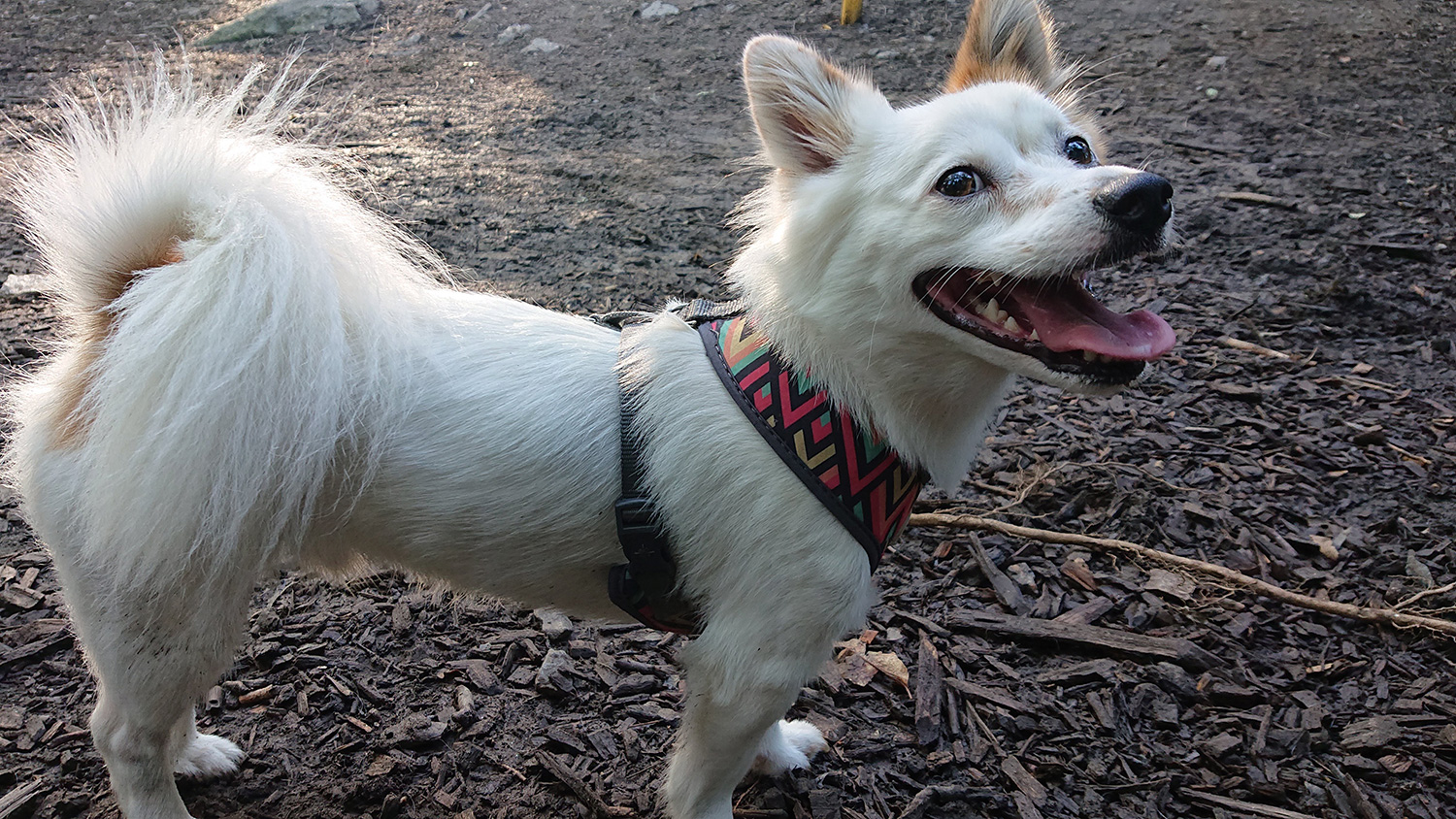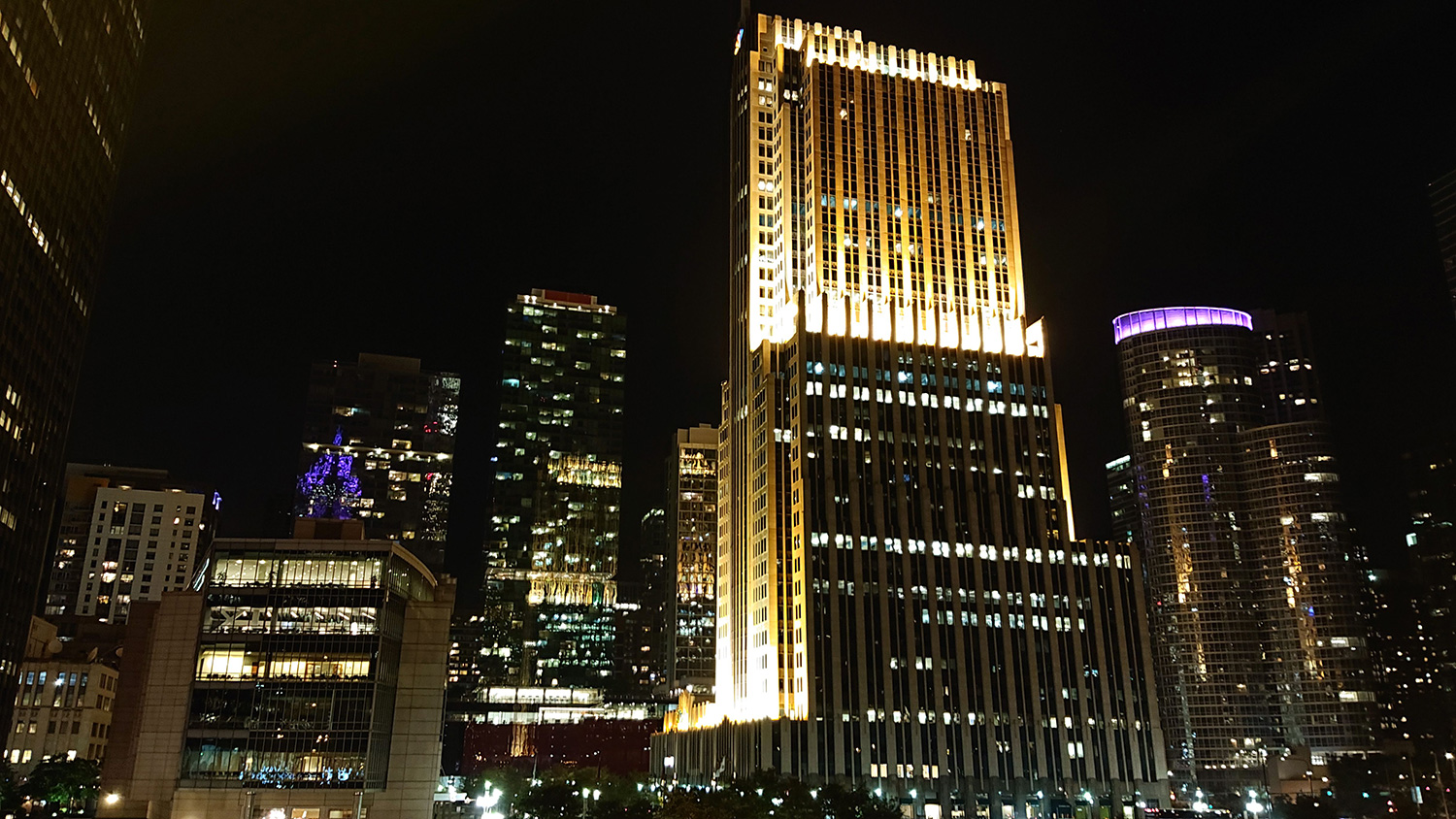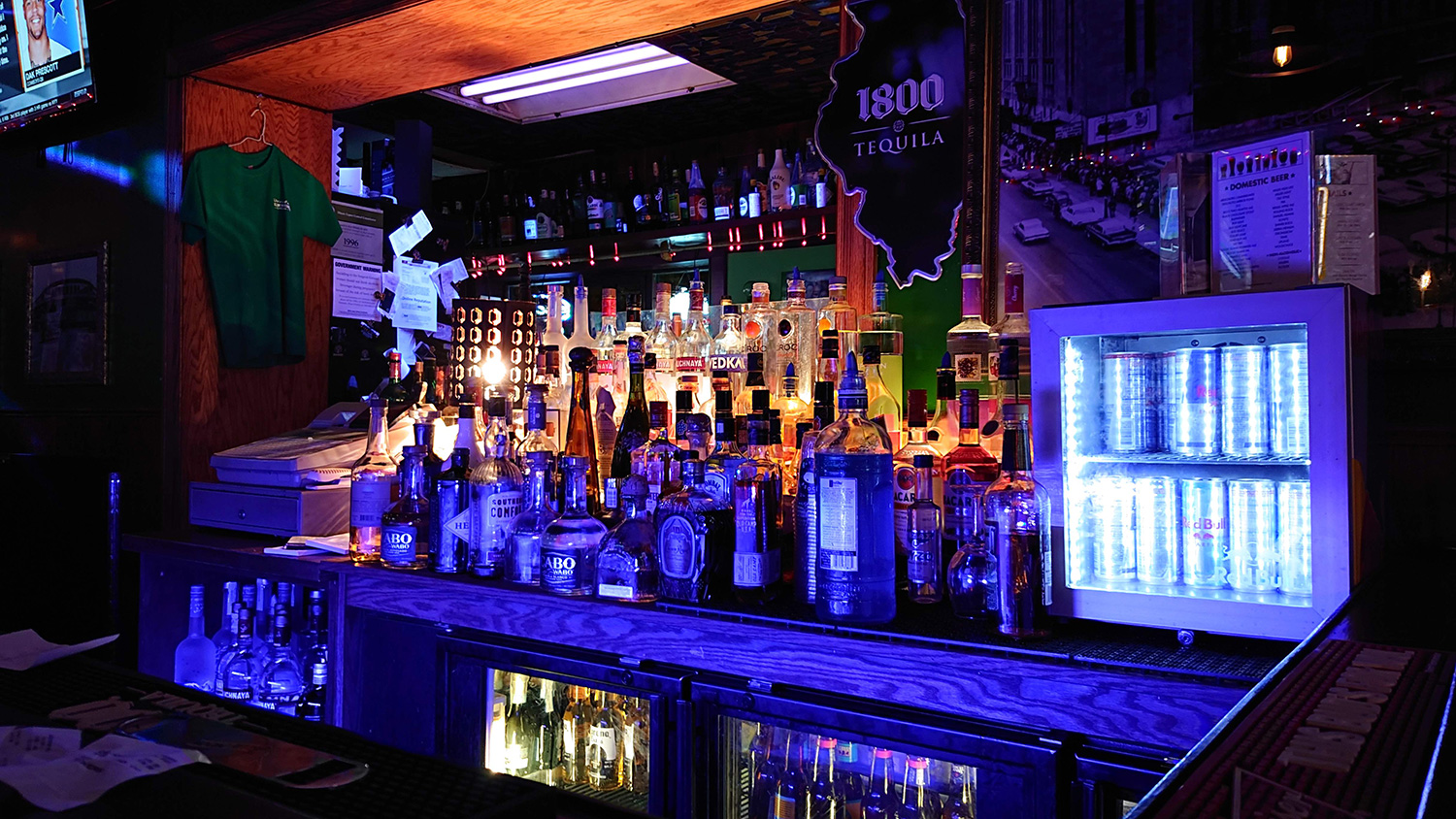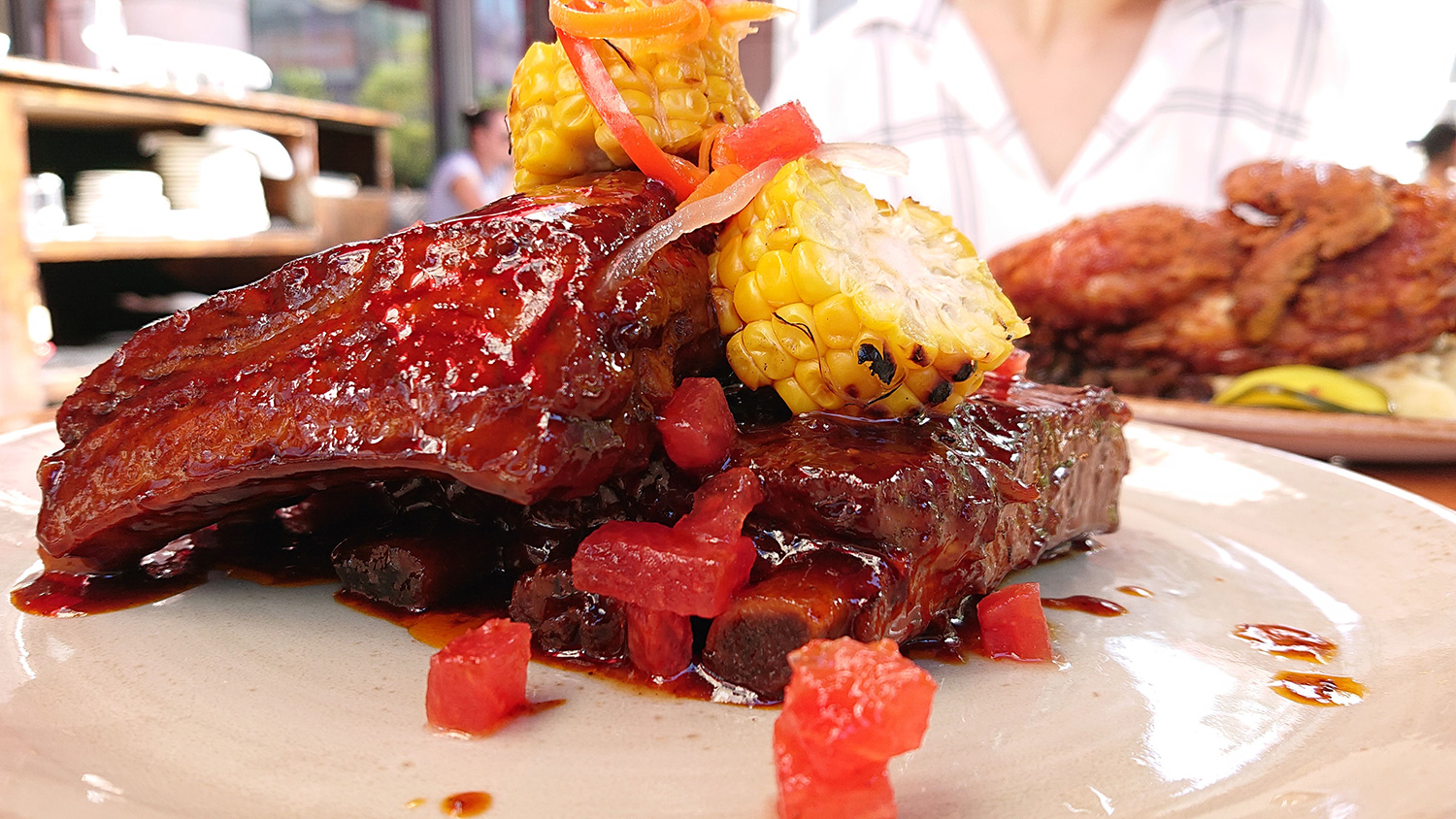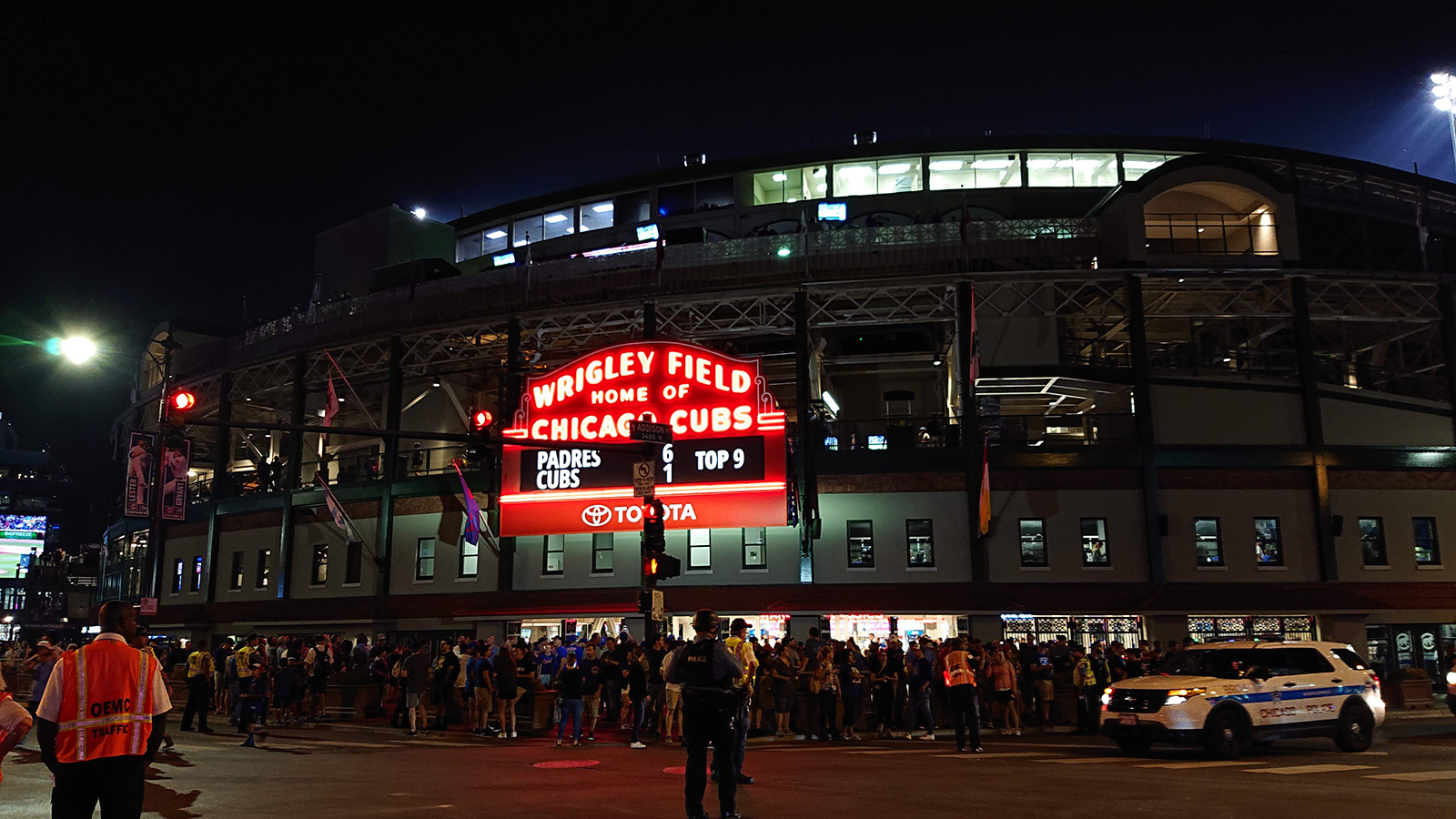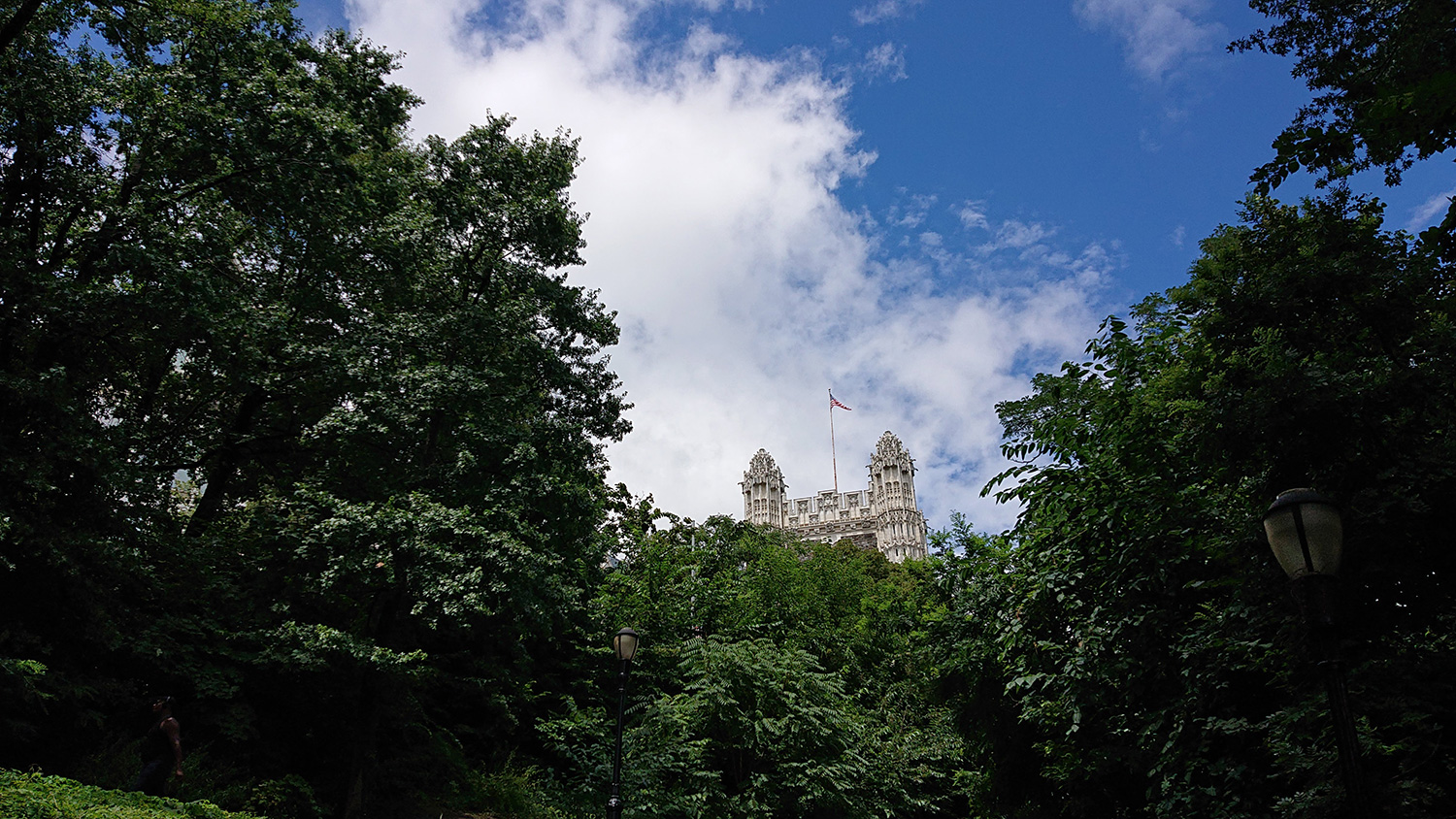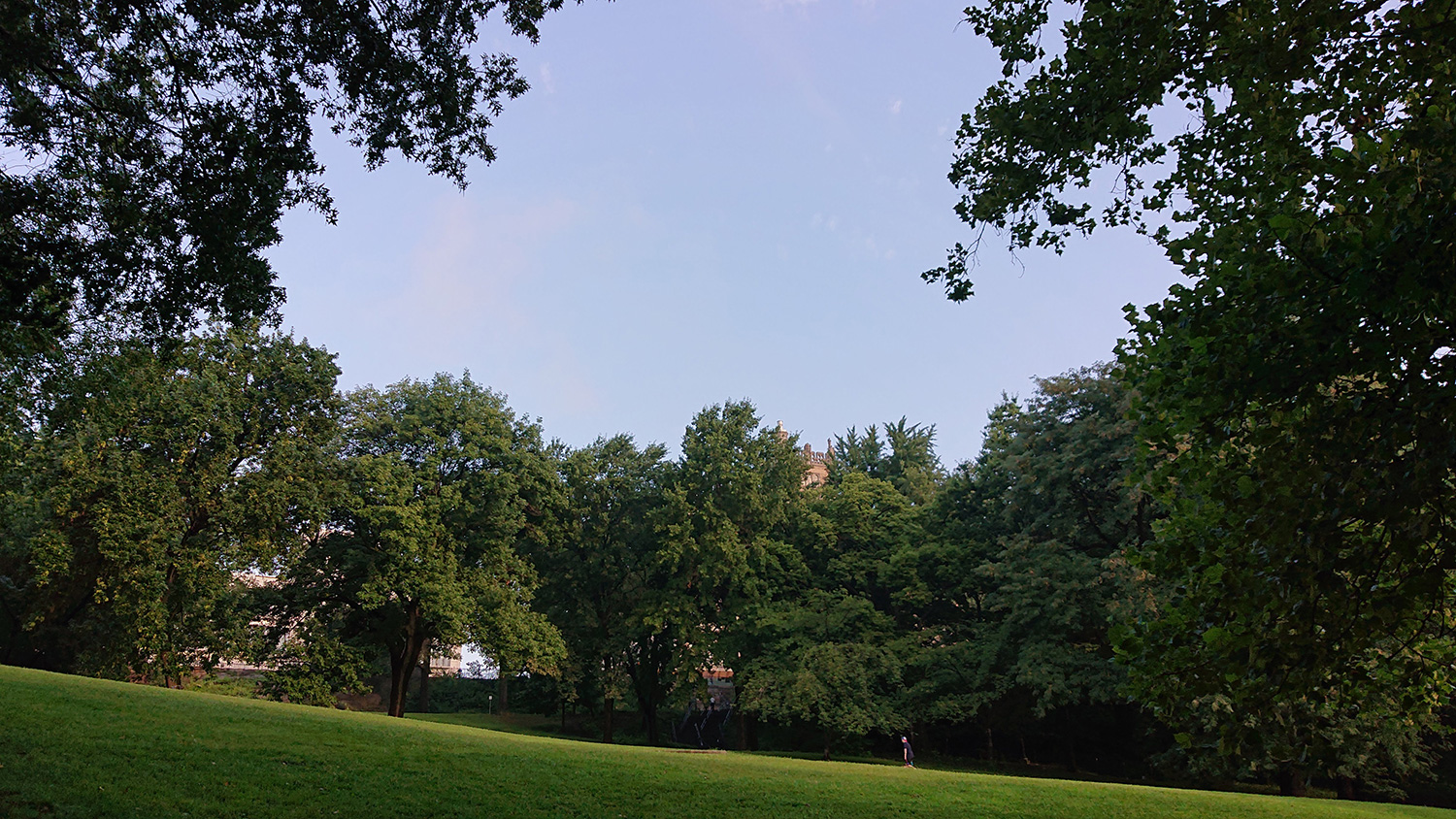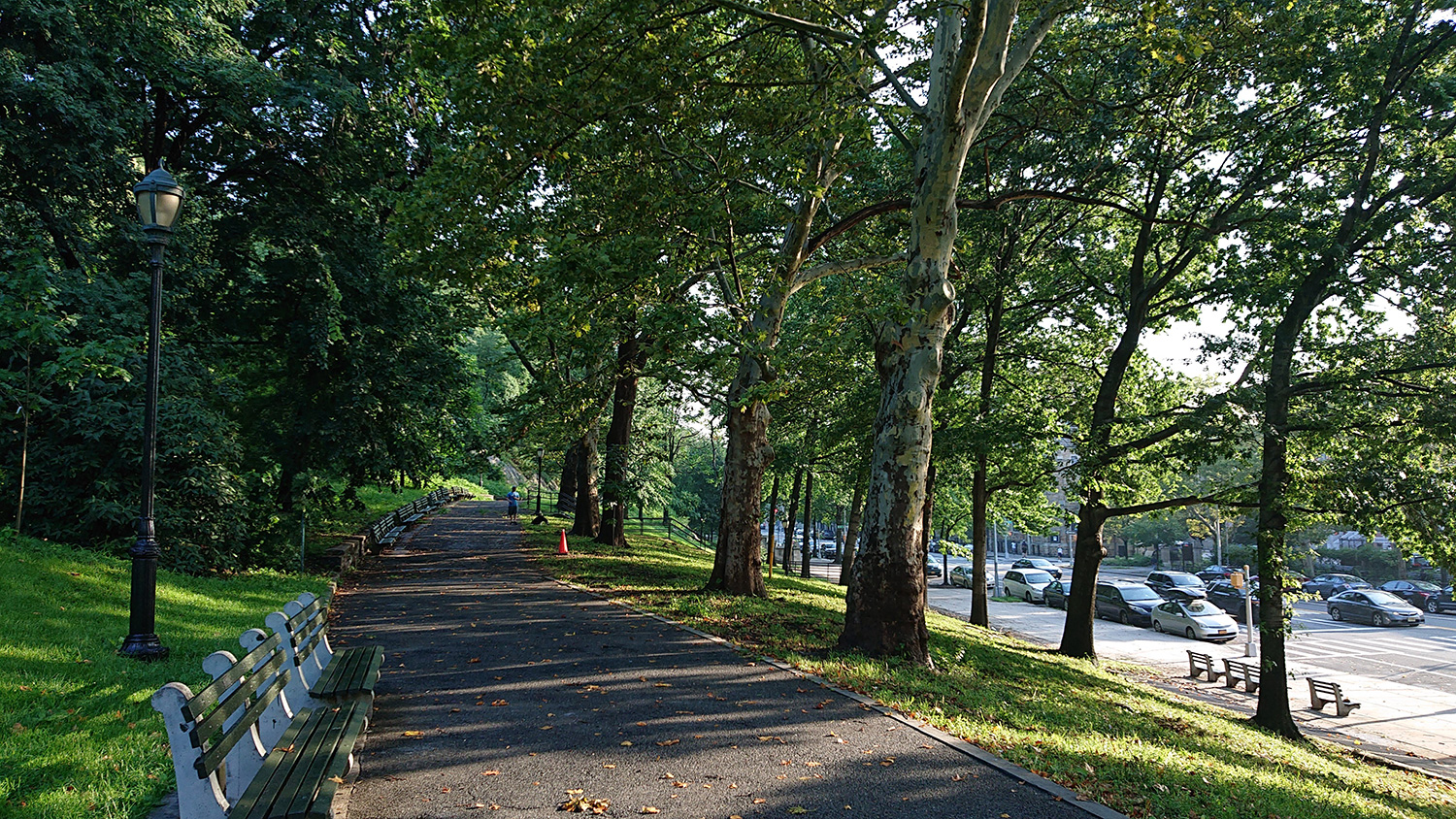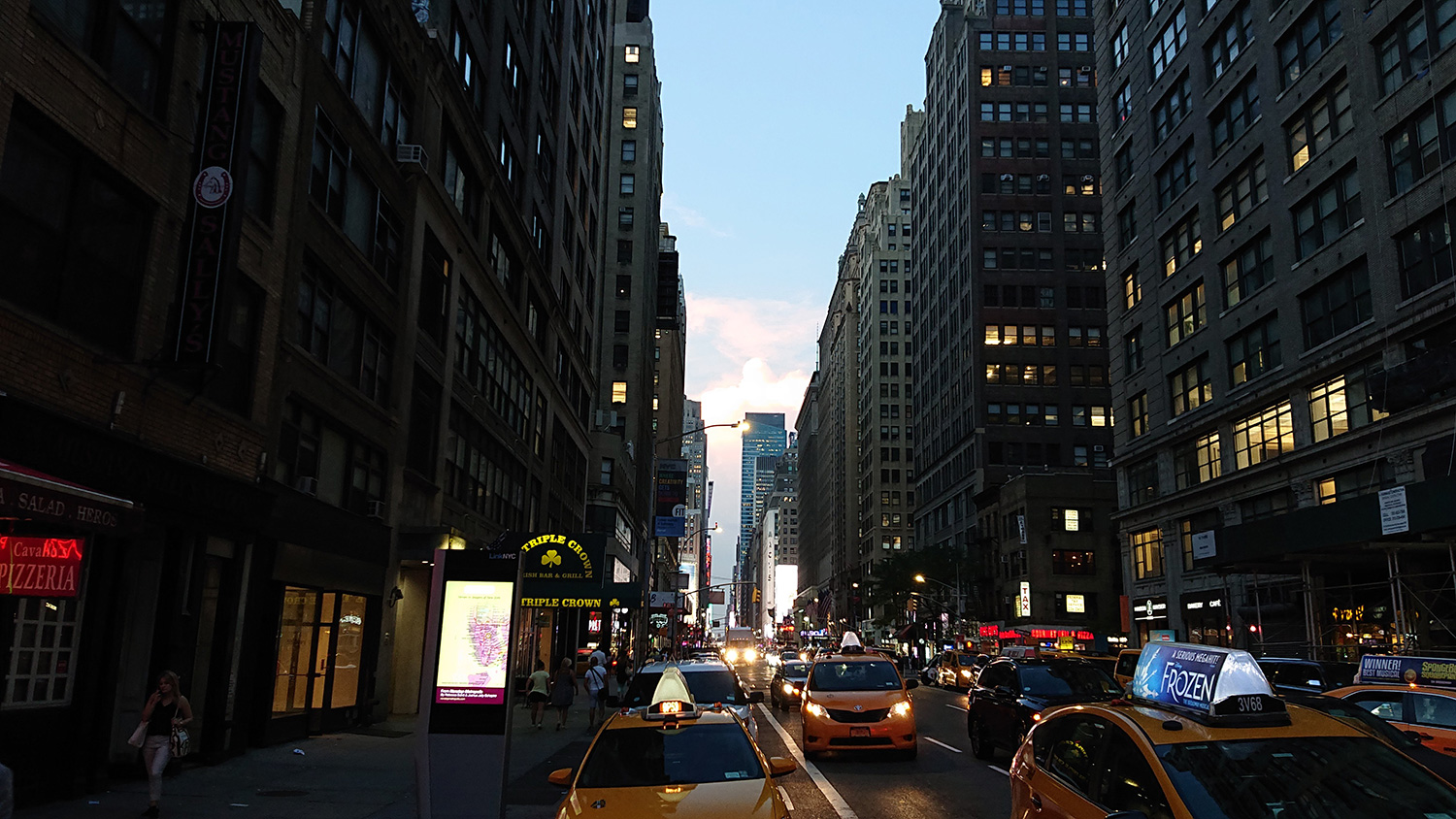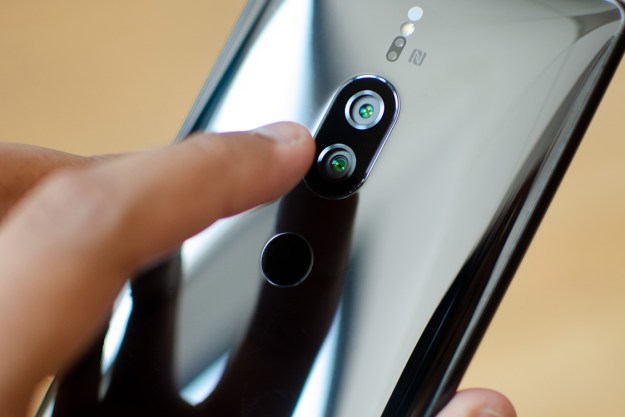
“Sony impresses with the XZ2 Premium’s video abilities, but the overall package doesn’t measure up to its high price tag.”
- Excellent 4K HDR display
- Takes great low light videos
- Good camera
- Day-long battery life
- Slippery, bulky design
- Low fingerprint sensor placement
- Inadequate video stabilization
- Too much bloatware
- Expensive
When you think of a $1,000 smartphone, Apple’s iPhone X is the first that comes to mind. It’s forward-thinking, with a nearly bezel-less design, and it packs a class-leading and secure facial-recognition system. Sony’s new Xperia XZ2 Premium also costs $1,000, but it hardly feels like it’s worth as much. It’s one of the most cumbersome phones we’ve held this year, thanks to its ridiculously thick body and dated 16:9 aspect ratio, and it also has thick bezels that make it look like it came straight out of 2015.
That being said, the spotlight feature on the XZ2 Premium is something we haven’t seen in any other phone to date: the ability to capture good-looking videos in “extreme low-light conditions.” This dual-camera system is a first for Sony, and it is capable of capturing video up to ISO 12800, which is the highest we’ve seen to date in a smartphone. It’s impressive — especially when compared to phones like the Galaxy Note 9 and the iPhone X — but it wasn’t enough to make us want to use the phone after our review period. Let’s take a closer look.
Thick and heavy design, fantastic display
Sony finally introduced a new design motif earlier this year called Ambient Flow, which is meant to accentuate the curves on its phones, making them more ergonomic to hold. It’s an improved look, but we have some problems, some of which we’ve already highlighted in our Xperia XZ2 review, as it looks similar. Ironically, the XZ2 Premium feels less “premium” than the XZ2.
The first features you’ll notice about the XZ2 Premium are its size and weight. This is a thick phone that’s also incredibly wide and tall. It will fill every hand — large or small — and it will be difficult to reach certain parts of the 5.8-inch screen without using both hands (or using the one-hand software mode). Its exact dimensions are 157.48 x 78.74 x 12.7mm, and it weighs 232 grams. The Galaxy Note 9 has a 6.4-inch screen, its dimensions are 161.9 x 76.4 x 8.8 mm, and it weighs 201 grams. The Sony phone is wider, thicker, and heavier, despite offering a smaller screen and a smaller battery.
The edges around the phone are curvy, it has rounded corners, and the edges on the back slope into the front. That makes it feel natural to hold, but it still remains a cumbersome phone to carry and use. We don’t like how thick it is, and how unnecessarily large it feels in the hand. That being said, we recommend stopping by a store to experience how the XZ2 Premium feels for yourself, as you may prefer a bigger phone. Alternatively, check out the Sony Xperia XZ2 Compact if you want a phone on the opposite end of the spectrum.
The spotlight feature on the XZ2 Premium is something we haven’t seen in any other phone.
It’s protected by Gorilla Glass 5 on the front and back with an aluminum frame around. The glass body and curvy design is a recipe for disaster. When placed on a flat, smooth surface, the Xperia XZ2 Premium has a mind of its own and starts moving around. It’s constantly trying to fall, and much to our dismay, it experienced two drops during our review period. The first is when it slid off a table onto the pavement (at an outdoor restaurant), and the second time it slid out of our pocket at a press conference. Thankfully, it only suffered a few scratches to the glass on the back.
The XZ2 Premium sliding out of pockets is more common than you think. It slid out of our pocket on the subway, on a plane, at the theater, and when sitting at the office, though, fortunately, we stopped it right on time, preventing any serious injury. The point is, this phone will try to hit the floor any chance it gets, so you definitely need a case — which will only add more bulk and weight to the phone — and you need to constantly think about where you place it and how.
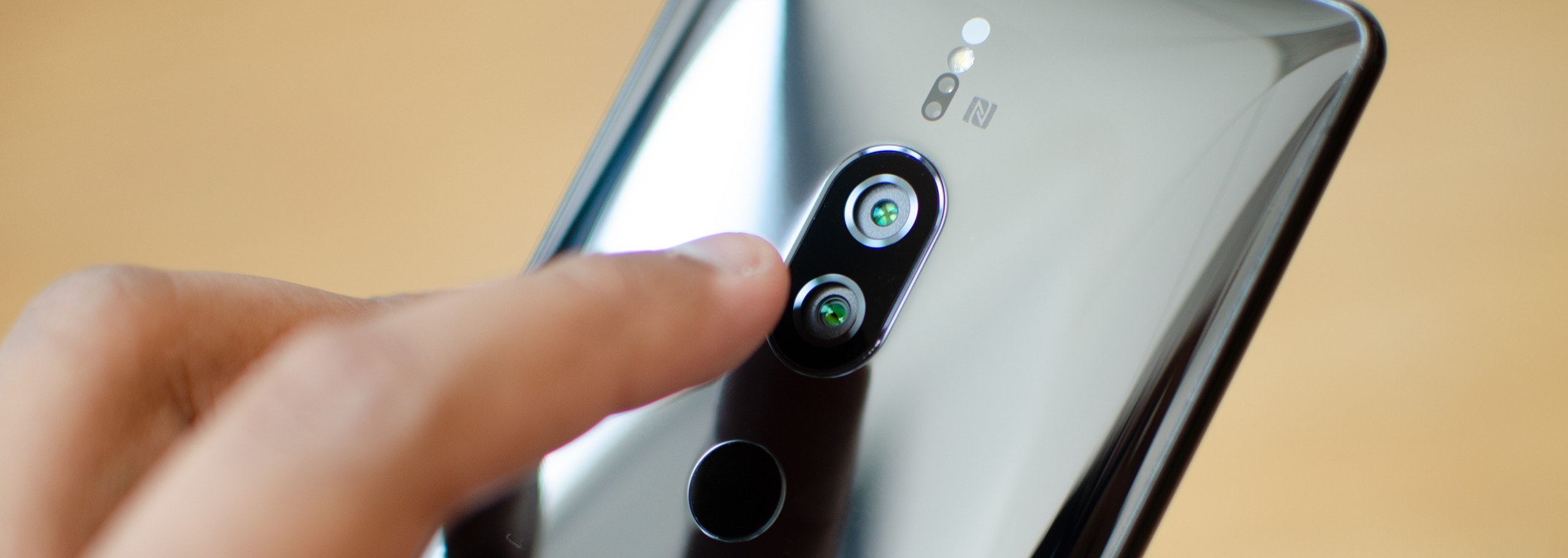
There’s a power button on the right edge, which is a tad lower than we’d like, a volume rocker above, and a camera shutter button at the bottom. There’s no headphone jack (a USB-C adapter is in the box), but there are two front-facing stereo speakers, and a USB Type-C charging port sits at the bottom. The speakers sound good, and you can easily hear audio in noisy environments, such as outdoors.
The front of the phone also packs chunky edges around the display, particularly at the top and bottom. Put the XZ2 Premium against almost every other flagship smartphone of 2018, and it will look the oldest thanks to its lack of an edge-to-edge screen. This dated, ugly look — paired with the unusual weight and thickness — does not make this phone feel like $1,000.
Front design aside, we love the look of the XZ2 Premium from the back. Both the Chrome Black and Chrome Silver colors make the phone look flashy and futuristic, and the centered camera, sensor, and fingerprint scanner give off a sci-fi vibe. We do have to point out the same gripe we had with the cheaper XZ2: The fingerprint sensor is too low. We’ve put our grubby fingers on the dual-camera sensor countless times thinking it was the fingerprint sensor. You get used to it after some time, but we’d still prefer if Sony raised it next year.
It is an absolute joy to watch media on this phone.
The IPS LCD 5.8-inch screen supports HDR, has a 3,840 x 2,160 4K resolution, as well as a 16:9 aspect ratio. It’s fantastically sharp and colorful, and the screen truly comes to life when you play 4K HDR content like Stranger Things on Netflix. The black levels aren’t as deep as we’ve seen on many OLED screens, but it is an absolute joy to watch media on this phone. The screen also gets plenty bright for most situations, and reading the screen in broad daylight is manageable when brightness is maxed out.
We did have one small issue with our unit — some colors on the screen would appear slightly muted as we swiped the notification drawer up and down. It was distracting and happened often enough for us to notice. We’ve reached out to Sony about the problem.
While we love the screen and the rear design on the XZ2 Premium, the weight, thickness, and overall large body made us want to swap phones as quickly as possible.
Strong performance, Android 8.0 Oreo
The XZ2 Premium is powered by the same processor inside its two smaller siblings — the Qualcomm Snapdragon 845 chip — but it comes with 6GB of RAM. We had absolutely no trouble with performance on this device. Apps open instantly, moving around the operating system is fast, and games like Alto’s Odyssey and PUBG Mobile run without any issues. You’ll be able to run almost any intensive app or service on this phone.
Here are a few benchmark results:
- AnTuTu 3DBench: 257,384
- Geekbench 4 CPU: 2,415 single-core; 8,272 multi-core
- 3DMark Sling Shot Extreme: 3,394 (Vulkan)
The XZ2 Premium’s AnTuTu score is one of our highest, coming in right below Samsung’s Galaxy S9 and S9 Plus. It reaffirms that you really don’t need to worry about performance here. One thing to note, the phone did get surprisingly warm after running these benchmark apps, but we never found it reaching a similar level of heat when playing games for a decent amount of time.
The phone runs Android 8.0 Oreo, and we’ve yet to run into any of the same software bugs we saw on the XZ2 and XZ2 Compact. Our biggest issue here is just how dated the software looks compared to other Android skins, but it’s still perfectly usable.
There is a good deal of bloatware, most of which you can’t uninstall but only disable, which is annoying. And there are also a handful of Sony apps such as 3D Creator, where you can create 3D images of objects or even your face. You can send it off to a 3D printer to build or simply share these images to Facebook. It’s neat, but it’s a feature we’d forget about after trying it once. There’s also Xperia Assist, which you can use to trigger several phone features based on time of day or events. For example, the Good Night action automatically turns on the blue light filter and Do Not Disturb at a time range you set. You can choose exactly what you want on or off, making it quite handy.
Sony has also included the Dynamic Vibration System it debuted on the XZ2, which tries to make you “feel” videos, music, and games by making the phone vibrate during punchy parts of the audio. To us, the vibrating phone doesn’t make us feel more immersed in what we’re doing, which is why we recommend simply ignoring this feature.
You likely won’t run out of space thanks to the base 64GB available, but in case you do, there’s a MicroSD card slot if you want to add more.
Ultra-low-light camera
The highlight of the Xperia XZ2 Premium is its camera, particularly with video, but let’s start with stills. The rear dual-camera system — a first for Sony — houses a 19-megapixel f/1.8 lens and a 12-megapixel monochrome lens with a f/1.6 aperture. It can capture up to 51200 ISO for photos and 12800 ISO for videos, which means it should be able to perform well in low-light conditions.
In good lighting, the camera can take well-detailed photos with good color accuracy, and the camera shutter is fast to react. The only delay we’ve seen is the few seconds it takes to process the photo. While it can handle high-contrast scenarios well with HDR, it’s slow to kick in and it doesn’t always work, requiring a few attempts before you get a nice, balanced shot.
In low-light environments, the camera app will say “ultra-high sensitivity” when it’s using both cameras. You can manually turn on the dual-camera system in the manual camera mode. The results are solid; photos have a respectable amount of detail and color accuracy, and while there’s quite a bit of noise, it’s not overpowering. There’s a fair chance some photos will come out blurry, which means you may have to make another attempt.
But when compared with the Galaxy Note 9 — which should also deliver excellent low-light photos — the results don’t look as strong. Photos from the Note 9 tend to be more detailed, more colorful, and less grainy – an example is the photo of the Nintendo Switch, which was actually much darker than it appears in the Note 9’s photo. In the XZ2 Premium’s photo, there’s a lot of noise (ISO 8000), and details start to become fuzzy.
So, while you can expect to take some solid low-light photos with the XZ2 Premium, we don’t think it can take the crown for the best low-light camera.
Videos look really shaky with Sony’s phone. To truly make use of this low-light camera, a smartphone gimbal or tripod is essential.
That all changes with video. Considering this is a $1,000 phone, we decided to compare the XZ2 Premium’s low-light video capabilities against two other $1,000 phones — the iPhone X and the Note 9. The results are astounding. At the park, the latter two phones produce videos that are much darker and filled with noise, but the XZ2 Premium’s video shows a ton more detail with less noise. In the videos of the dog sleeping, the XZ2 Premium’s video offers the best colors with far less noise than the other two videos, though the dog in the iPhone X’s video does appear a tad sharper.
That being said, the XZ2 Premium suffers greatly from poor stabilization compared to the other two cameras. Camera shake is hardly noticeable with all the videos from the iPhone X and the Note 9, but videos look really shaky with Sony’s phone. To truly make use of this low-light camera, a smartphone gimbal or tripod is essential.
Like the XZ2 Compact and the XZ2, the XZ2 Premium can also capture 4K HDR footage, but because its screen is 4K HDR, it’s one of the few phones where you can capture 4K HDR content and watch it in full glory on the same screen. Videos have beautiful and true-to-life color profiles, but we encounter the same problems with video stabilization.
The camera can also capture super slow motion video at 960 frames per second in 1080p. It’s a fun feature that can produce some incredibly cool video, but it requires precise timing and lots of light for it to look good. There’s also going to be a Portrait Mode and a monochrome mode for photos coming soon in a software update, but we’ve yet to see it on our device.
The 13-megapixel front camera takes selfies that are more than satisfactory, and it even uses the display as a flash so selfies look good in low light as well.
For all the technology Sony packs into this dual-camera system, we can only say this phone takes the best low light videos. It’s not the best smartphone camera, and it’s not the best low-light camera — though that doesn’t mean it doesn’t take good photos. The 4K HDR option is a plus, but you can’t record with it for long, and it really does need either a tripod or a gimbal for best results.
Battery life
We never felt battery anxiety with the 3,540mAh battery inside the XZ2 Premium. After taking the phone off the charger at 7:30 a.m., with medium to heavy use including music streaming, gaming, web browsing, and taking pictures, we’d end up with a little under 40 percent by 8 p.m. This phone should easily get you through a day, and perhaps a little more with light use.
There’s wireless charging onboard, as well as support for Quick Charge 3.0 in case you want to top up fast.
Price, availability, and warranty information
The Xperia XZ2 Premium costs $1,000, and it’s available for purchase now at Amazon, Best Buy, and Focus. The phone only supports GSM networks, which means it will work on T-Mobile and AT&T, but you won’t be able to use it on Verizon or Sprint.
Sony offers a standard one-year limited warranty that covers the phone from manufacturer defects, and nothing more.
Our Take
Sony’s Xperia XZ2 Premium impresses with its low-light capabilities, but its spotlight features cater to a niche audience, and they’re not good enough to make this phone exciting to use.
Is there a better alternative?
Yes, in this price range, every smartphone in our best smartphones guide is up for grabs. We strongly recommend you consider the Galaxy Note 9 or Galaxy S9 Plus, as they seriously impress with low-light photography (also check out the Huawei P20 Pro if you don’t mind importing a phone).
Otherwise, the Google Pixel 2 XL is our top pick. It’s more affordable, it has an excellent camera, and the best software experience you can get on an Android phone.
How long will it last?
The XZ2 Premium is wrapped in Gorilla Glass 5, and we’ve already managed to scratch it up thanks to its slippery nature. We recommend a case if you don’t want it to end up shattered. The phone is IP65/68 water- and dust-resistant, so it should be able to withstand rain and maybe a dunk in the pool.
Sony has already promised an update to Android 9.0 Pie, which we expect will arrive later this year. You should expect an update to Android Q next year too. Overall, we expect this phone to last you three to four years, if not more.
Should you buy it?
No, at $1,000 it’s tough to justify buying the XZ2 Premium. Unless you desperately want to film in 4K HDR or often find yourself filming in low light, this phone doesn’t do enough for its high price tag, and it’s not pleasurable to use. If you are seriously considering it still, we strongly recommend you find it at a nearby retailer and hold the phone to see if you’re comfortable with its size.
Editors' Recommendations
- Snapdragon 8 Gen 2 is here, defining the next generation of premium smartphones
- Sony’s new Xperia 1 IV comes with a crazy moving zoom lens
- Sony’s Xperia 10 may sport same flat, iPhone-style design
- Sony’s $1,800 Xperia Pro-I phone shares features with RX100 VII compact camera
- The Sony Xperia 1 III has a 4K display and a variable telephoto camera





